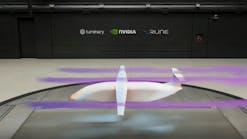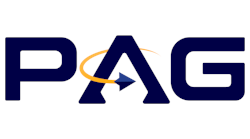How Do You Ensure Your Precision Measuring Equipment is Accurate?
Working with tools and equipment each and every day, the aviation maintenance professional many times uses both hand tools and specialized test equipment that make some type of precision measurement. Precision Measuring Equipment (PME) may be hand tools such as a torque wrench or calipers, pressure gauges to electrical diagnostic equipment, all the way to specialized test equipment such as the type used to check the pitot-static system on an aircraft. There are many different types of PME used for a whole variety of maintenance tasks. One item they all have in common is the need for a regular inspection for general condition and a calibration check to ensure that the precision measurements you the aircraft maintenance technician are using to troubleshoot and repair and aircraft or system are in fact correct.
Most tool and equipment manufacturers have developed recommendations or perhaps requirements for inspection and calibration verification intervals and they provide this information when PME is purchased. Some aircraft maintenance organizations have established their own PME calibration program with inspection and calibration check intervals designed to meet or exceed the manufacturer’s calibration intervals. These programs are typically developed based on the unique type of maintenance operation, the amount of PME usage, and the environment in which the specialized equipment is used. Regardless of the size of your company, the size of the aircraft you are maintaining, or the complexity of your maintenance task, ensuring the accuracy of the PME you are using to perform maintenance and inspection is critical. This is nothing new — we all should understand this issue.
I was recently reminded of the importance of this issue while speaking with a colleague of mine who is also a former airline employee. My friend explained he found himself visiting a small off-the-beaten-trail maintenance shop that was working on several single engine aircraft. Being accustomed to large maintenance and repair organizations which have defined and required tool and test equipment calibration programs, my friend stated he was taken back when the small backcountry shop was — well let’s just say this shop was less than diligent with having regular inspections and calibration checks accomplished on some of the PME in their toolboxes. As my colleague firmly explained to this small shop, having your PME checked for condition and accuracy does not only apply to a large maintenance company.
This story caught my attention and my guess is this situation is isolated and not wide-spread. I can understand where a small shop especially if located in an out-of-the-way place, may be presented with some challenges regarding the amount of tools and equipment kept on-hand and the ability to easily transport PME to have calibration checks accomplished. However, I felt this story would serve as a good reminder on the importance of establishing a defined calibration program. A simple method to track the inspection and calibration intervals that are either recommended or required by the PME manufacturers can be easily established in any size maintenance organization. Establishing and maintaining a tracking program for your PME is a basic best-practice that can ensure compliance with the aircraft, engine, and equipment manufacturers’ maintenance requirements, and FAR 43.13 (a) one of the basic aircraft maintenance performance rules.
Enjoy the issue and thanks for reading AMT, Ron



